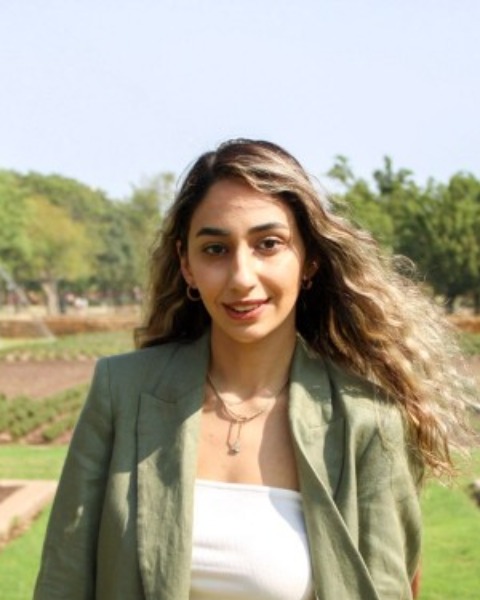Nano and Micro Technologies
Nano and Micro Technologies - Poster Session C
Poster J15 - Label-free Characterization of Nanoparticle-cell Interactions Using Flow Cytometry
Friday, October 25, 2024
10:00 AM - 11:00 AM EST
Location: Exhibit Hall E, F & G

Mobina Mohammadnejad (she/her/hers)
Student
University of Oklahoma-Norman Campus
Norman, Oklahoma, United States
Stefan Wilhelm, PhD
Associate Professor
University of Oklahoma, United States
Presenting Author(s)
Primary Investigator(s)
Introduction: Nanoparticles have gained significant attention in nanomedicine due to their potential for targeted drug delivery and imaging applications. Despite their promise, the clinical success of nanoparticle-based therapies is often hindered by challenges in effectively reaching and accumulating within tumor microenvironments. One key factor influencing nanoparticle distribution is their interaction with various cell types in a physiological setting.
To better understand these interactions, it is essential to evaluate nanoparticle behavior in environments that more closely mimic the complexity of living tissues. While traditional mono-culture systems provide useful insights, they may not fully represent the interactions occurring in mixed cellular environments. Co-culture models, which involve growing multiple cell types together, offer a more physiologically relevant approach for studying these interactions.
This study aims to compare the uptake of PEGylated gold nanoparticles (AuNPs) by RAW264.7 macrophages in mono-culture with that in a co-culture model of RAW264.7 macrophages with 4T1 breast cancer cells. With the flow cytometry, we investigate how the co-culture model affects the internalization of AuNPs by cells. This comparison seeks to bridge the gap between simplified in vitro models and more complex physiological conditions, thereby advancing the development of more effective nanoparticle-based therapeutic strategies.
Materials and
Methods: Synthesis and PEGylation of Gold Nanoparticles (AuNPs):
Gold nanoparticles (AuNPs) with a diameter of 100nm were synthesized and characterized using UV-VIS spectroscopy and Dynamic Light Scattering. To enhance stability and biocompatibility, the AuNPs were PEGylated with methoxy-PEG-thiol (mPEG-SH), purified by centrifugation, and resuspended in tween and sodium citrate solution.
Cell Culture:
RAW264.7 macrophages were cultured in DMEM with 10% fetal bovine serum (FBS) and 1% penicillin-streptomycin. 4T1 breast cancer cells were cultured in RPMI-1640 medium with 10% FBS and 1% penicillin-streptomycin. Both cell types were maintained at 37°C in a humidified atmosphere with 5% CO₂.
Nanoparticle Treatment and Cellular Uptake Analysis:
RAW264.7 cells were seeded in 12-well plates at 5x10^4 cells per well and treated with 100nm PEGylated AuNPs at 0.216nM for 24 hours. For co-culture, RAW264.7 and 4T1 cells were seeded together in 12-well plates at a specific ratio, maintaining the same total cell density, and treated under identical conditions.
Flow Cytometry Analysis:
After 24 hours, cells were washed with PBS, scraped off, collected, and resuspended in PBS for flow cytometry analysis. A Cytek Northern Lights flow cytometer was used to record 50,000 events per sample. Data were analyzed using FlowJo software to quantify AuNP uptake based on mean fluorescence intensity (MFI), with a comparative analysis between individual and co-culture models.
Results, Conclusions, and Discussions: Cellular Uptake Analysis:
RAW264.7 macrophages in mono-culture exhibited significantly higher nanoparticle uptake compared to those in co-culture with 4T1 breast cancer cells. The mean fluorescence intensity (MFI) for AuNPs was reduced in the co-culture model, indicating that the presence of 4T1 cells affects nanoparticle internalization by macrophages.
Comparison of Mono-Culture and Co-Culture Uptake:
RAW264.7 macrophages showed higher nanoparticle uptake in mono-culture compared to the co-culture model with 4T1 cells. The reduction in uptake in the co-culture model highlights how interactions with other cell types can influence nanoparticle distribution and uptake.
Conclusion:
The study demonstrates that RAW264.7 macrophages take up nanoparticles more efficiently in mono-culture than in co-culture with 4T1 cells. The co-culture model, which better represents physiological conditions, reveals that cellular interactions can significantly impact nanoparticle uptake.
Discussion:
Flow cytometry effectively assesses nanoparticle uptake in co-culture models, providing insights into interactions in more physiologically relevant environments. This approach helps address challenges in nanomedicine, such as optimizing nanoparticle delivery to tumors. Future research should explore additional tissue types and refine experimental conditions to enhance nanoparticle delivery strategies and therapeutic outcomes.
Acknowledgements (Optional):
